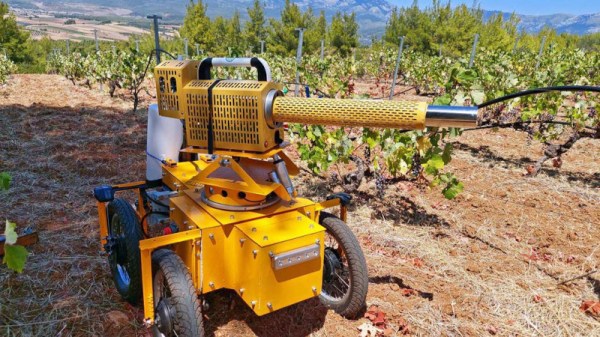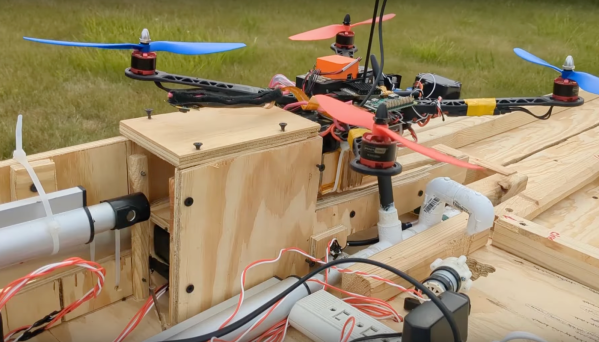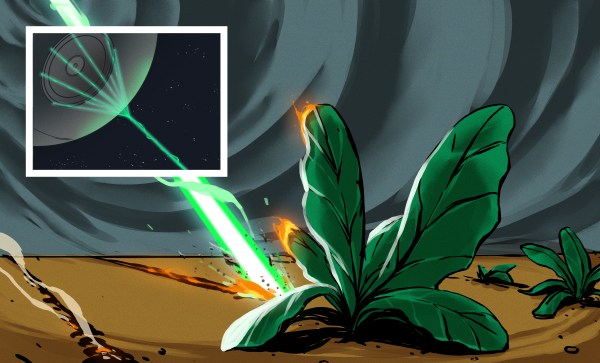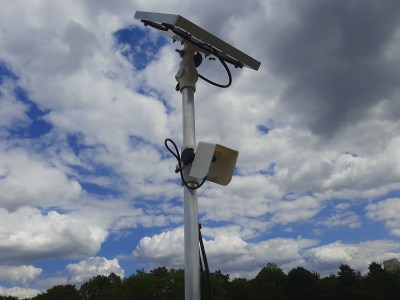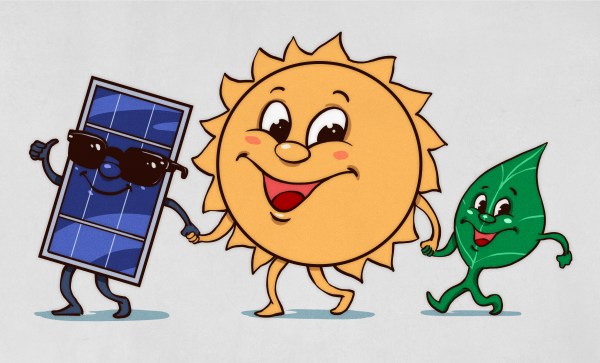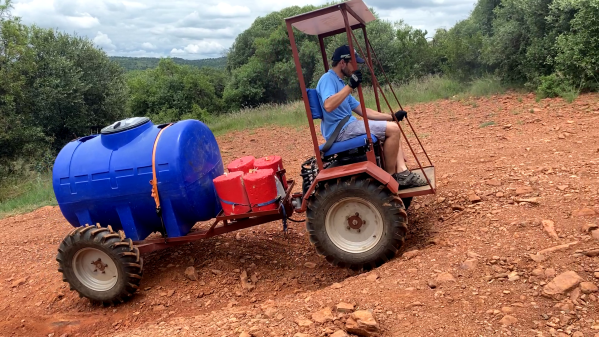In the world of agriculture, not all enterprises are large arable cropland affairs upon which tractors do their work traversing strip by strip under the hot sun. Many farms raise far more intensive crops on a much smaller scale, and across varying terrain. When it comes to automation these farms offer their own special challenges, but with the benefit of a smaller machine reducing some of the engineering tasks. There’s an entry in this year’s Hackaday prize which typifies this, [KP]’s Agrofelis robot is a small four-wheeled carrier platform designed to deliver autonomous help on smaller farms. It’s shown servicing a vineyard with probably one of the most bad-ass pictures you could think of as a pesticide duster on its implement platform makes it look for all the world like a futuristic weapon.
A sturdy tubular frame houses the battery bank and brains, while motive power is provided by four bicycle derived motorized wheels with disk brakes. Interestingly this machine steers mechanically rather than the skid-steering found in so many such platforms. On top is a two degrees of freedom rotating mount which serves as the implement system — akin to a 3-point linkage on a tractor. This is the basis of the bad-ass pesticide duster turret mentioned above. Running it all is a Nvidia Jetson Nano, with input from a range of sensors including global positioning and LIDAR.
The attention to detail in this agricultural robot is clearly very high, and we could see machines like it becoming indispensable in the coming decades. Many tasks on a small farm are time-consuming and involve carrying or wheeling a small machine around performing the same task over and over. Something like this could take that load off the farmer. We’ve been there, and sure would appreciate something to do the job.
While we’re on the subject of farm robots, this one’s not the only Prize entry this year.

